So How Goes Trying To Get Published, Victoria: The Editing Edition
…An Editing Edition?
…hmm.
If publishing isn’t like it looks in the movies, editing really isn’t. Unless you yourself are an editor, whatever image you have right now in your head of “how editing works” is almost certainly not how it works, because I have been editing my own work for YEARS and I still don’t understand what I am trying to do or how I do it when it’s done.
(I’m not talking about proofreading or even line-editing, I should be clear. I mean the big-picture developmental editing.)
Every time I talk to a fellow writer about their editing process I learn something new. If everyone writes in their own way, then everyone edits in at least three different ways, based on different scenarios/mediums/variables, and don’t even get me started on how some people edit using spreadsheets. (I mean, I love spreadsheets probably at least or more than the next person but that shit is witchcraft and terrifying.)
Editing one’s own work is a completely different kettle of typos than editing other people’s; for me, it’s about making sure that the draft 0 I finished comes to resemble what I want the story to be. Sometimes that means cutting scenes; sometimes it means adding them. Then I read it out loud, tidy up the sentences, and send it off to beta-readers.
This step is really important, because they can catch the stuff I can’t–like how something in the background is completely obvious to me (the person who placed it there), but not to anyone else. Once I have their responses, I can triangulate problem areas, and edit again.
But that’s about the most that I can do right now. In terms of skillsets I am still very much a beginner. If editing was an RPG I’d be still in leather armour and fighting dire rats. But I am learning.
Asking myself: “do I need this scene?” and “should these characters be separate or combined into one?” and all the other big-edit questions that are easier to remember and think about when you’re looking at someone else’s work. Every so often I get a little bit of a glimpse of how to make something not just “more of what I want” but better, more effective. Having had professional editors take a look at my work provides teaching moments too, even when they’re not specifically trying to do that.
Last Wednesday I prepared Chapter Six of Creampuffs for WattPad. So far, this prep has entailed only a bit of tidying before I paste the chapter, because I did several rounds of beta-reads and edits before I ever sent it off to agents. Last week, however, I was trying something new to make formatting in WattPad easier (by far the most annoying thing about posting to WattPad is how it strips formatting from pasted text, which is very tiresome for those of us who revel in italics). Had to paste the same chapter over and over in attempt to nail the process without losing formatting.
Maybe it was that repetition and split focus but something clicked in my mind, and I realized, very belatedly, that I didn’t need Chapter Six.
At all.
It didn’t add much new information; it introduced several characters who didn’t need to be there, I could cut their appearances later or introduce them then; it was more an exercise in me exploring how Michelle and Dolores–the two important characters–felt about what was going on in their world. But I could simply reference those revelations later on. And, if I cut the chapter, I could leap into the next, which had more action and/or awkward nerd flirting.
So with a wiser, saddened heart I cut Chapter Six, patted myself on the back for having levelled up over the past year, and then started the process all over with the new Chapter Six (née Chapter Seven).
If you’d asked me back in 2017 when I was finalizing Creampuffs if I needed that chapter I would have said yes; it answers some questions people might have about how the beginner’s gym works and why anyone would want to pay for such a service. There’s some good moments in there. But I can take those moments and add them else where in the book, put the words in someone else’s mouth, or just trust that it’s clear enough to the reader as-is.
Time will tell. Who knows what I will realize after the dust settles on the WattPad version? Maybe someone will comment and make me realize something else is missing or that something should be more clear. Or maybe I’ll get to the end of how far I can take Creampuffs on my own. Either way, it’ll have been worth it; it clicked on a lightbulb that I can shine on my other stories moving forward.
Everything is learning.
(Except plotting by spreadsheets. Seriously, don’t come near me with that. I’ve got a crucifix here and I’m not afraid to use it.)


Kathy Price
Love this! Everything is ” learning “